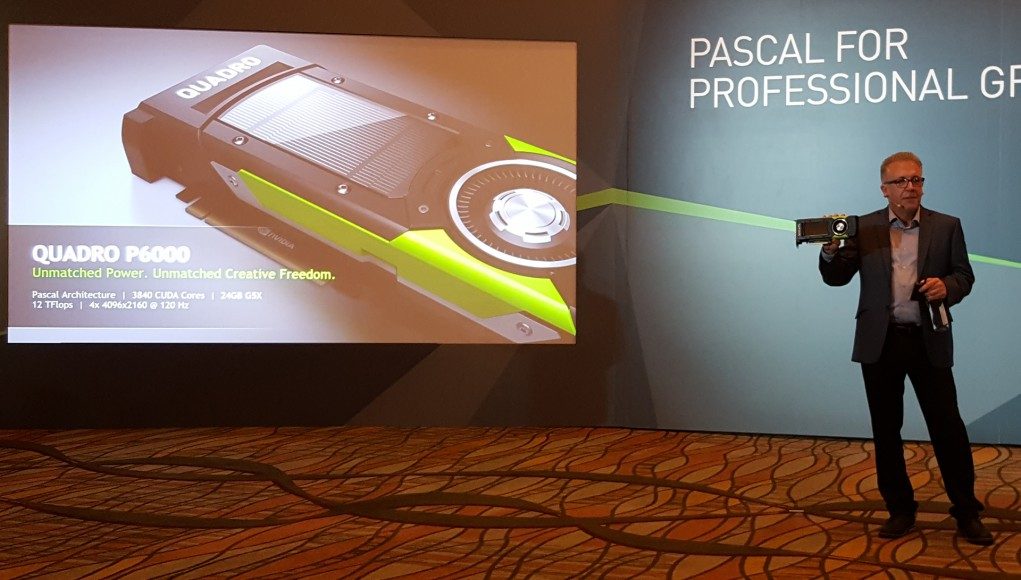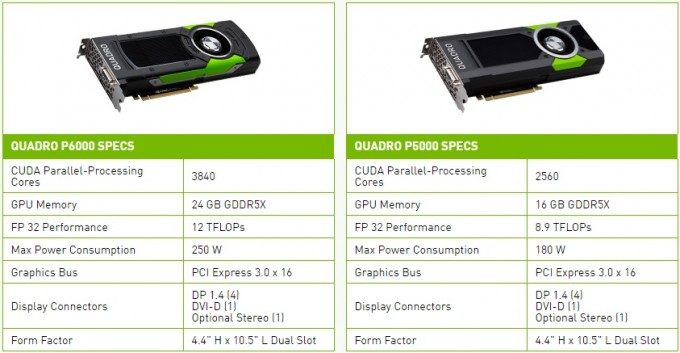NVIDIA has announced its latest line of professional focused GPUs aimed at the VR industry and its specs impress, as does its potential price.
NVIDIA’s Quadro series of GPUs is almost as old as the GeForce brand itself. Long before GPU acceleration in the workplace was common, Quadro cards have existed with specifications tuned for that target markets needs – and they always had a price tag to match.
As is tradition for NVIDIA, it chose SIGGRAPH – running from 24-28 July in Anaheim, CA – to launch its latest Quadro cards, along with a handful of other software initiatives targeting the professional VR sector. The flagship of the line, the new P6000, is based on the company’s latest Pascal architecture, the same chassis that powers the GTX 1060, 1070 and 1080 consumer cards. Except that in Quadro form, the P6000 packs 24GB of RAM and boasts 3840 CUDA cores all with a TDP of 250W. It’s flanked by it’s less well endowed brother, the P5000 which houses a ‘mere’ 16GB of RAM and 2560 CUDA cores.
The P6000 supposedly delivers some 12 Tera-flops of performance and is being marketed, alongside more traditional professional applications, as a VR production tool. The new GPUs are on show at this years show and are flanked by a handful of new software initiatives designed to leverage its power. VRWorks 360 for example is being built to allow an accelerated VR Video workflow which, so NVIDIA claim, is capable of delivering higher resolution, multi-camera editing and video stitching for 360 films. The company also announced a suite of VR and Ray Tracing tools for developers, which we’ll cover soon.
What will this new flagship silicon cost you? The current 6000 series comes in at around a cool $4000, so brace your wallet for impact.








